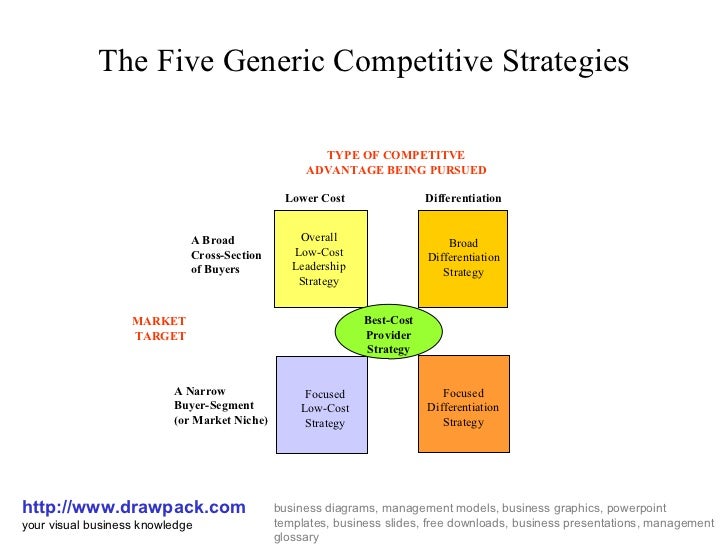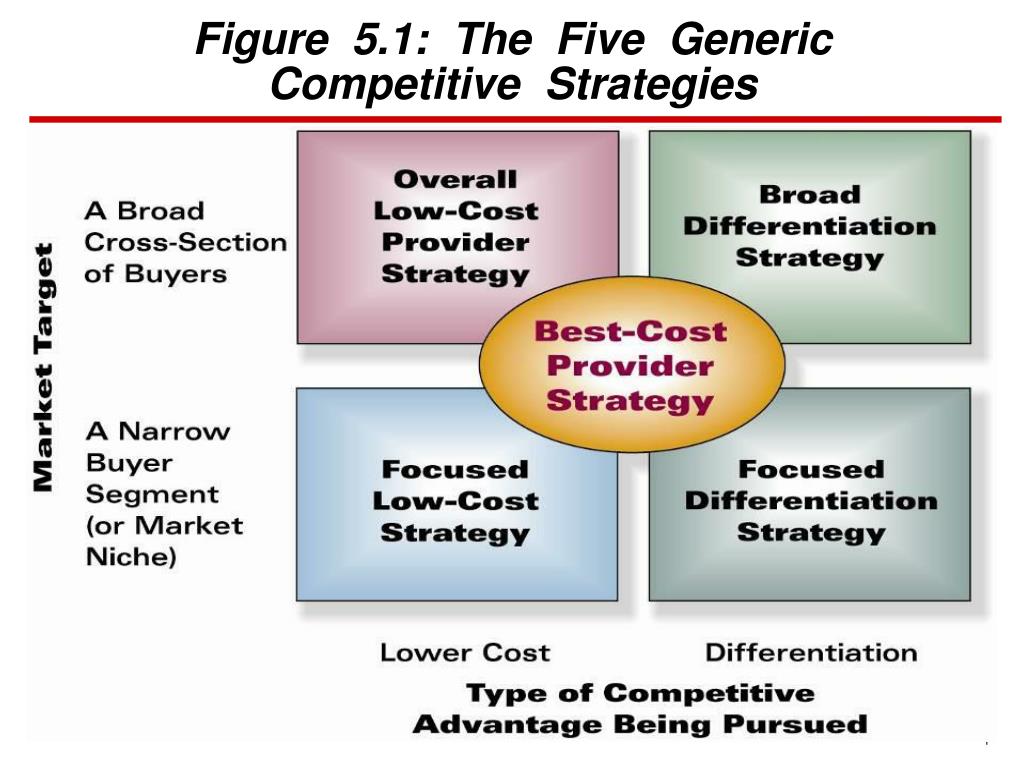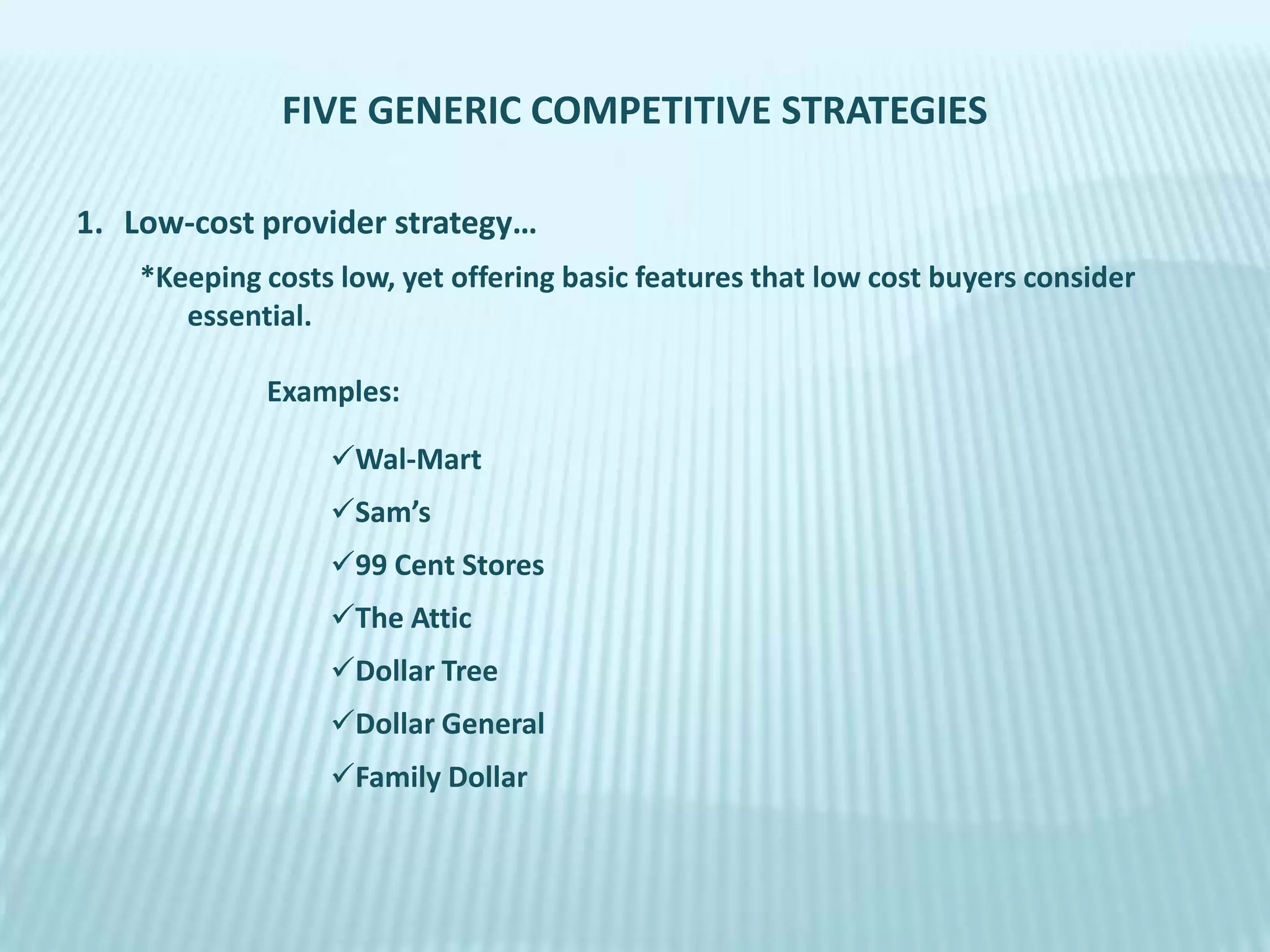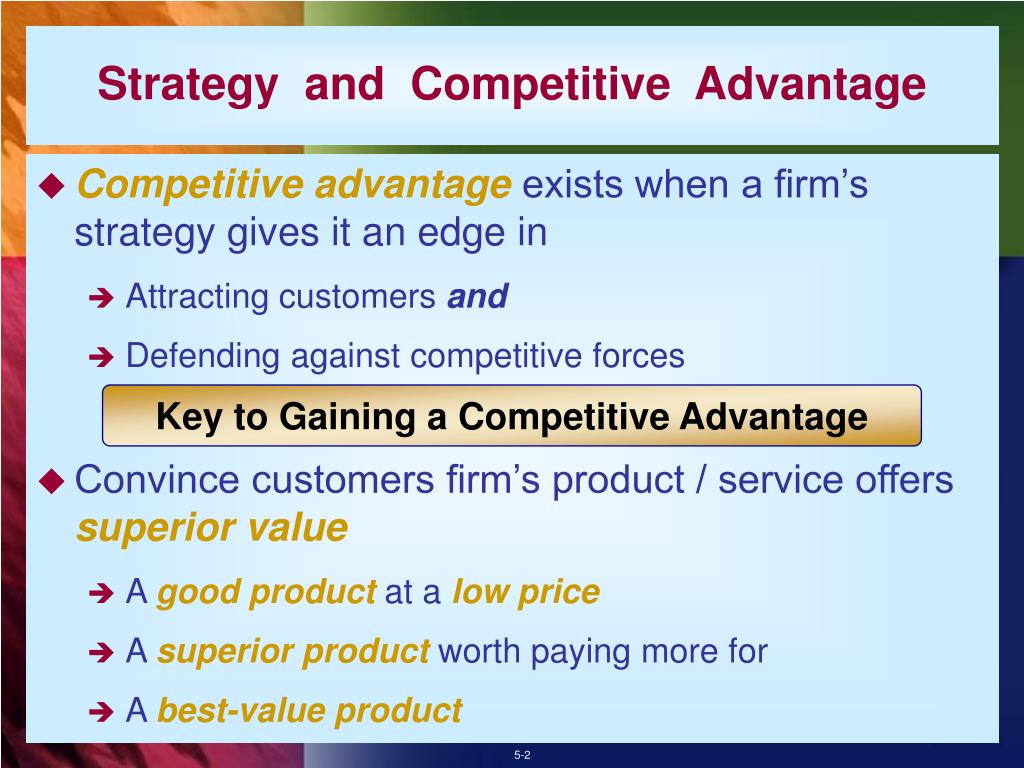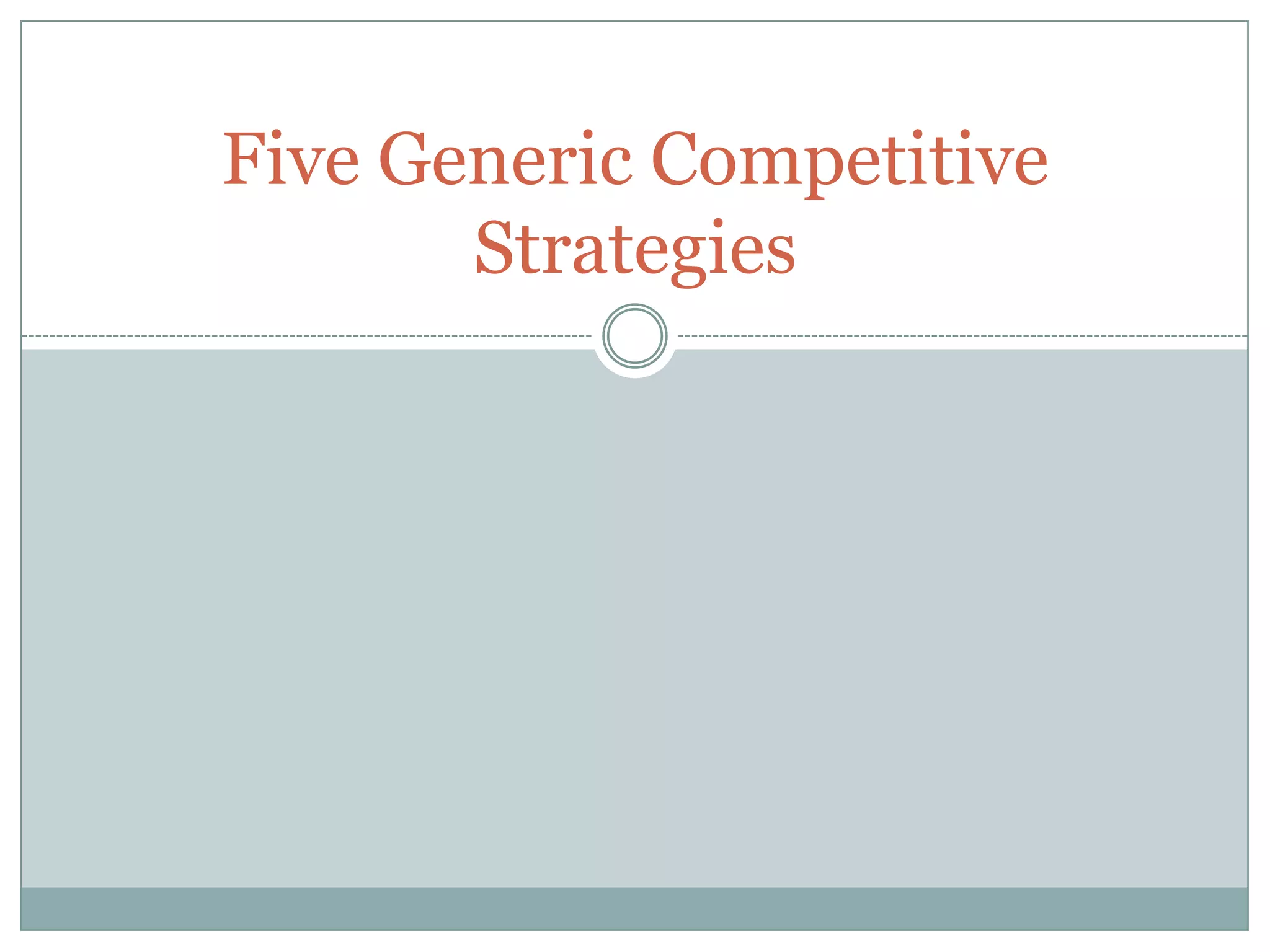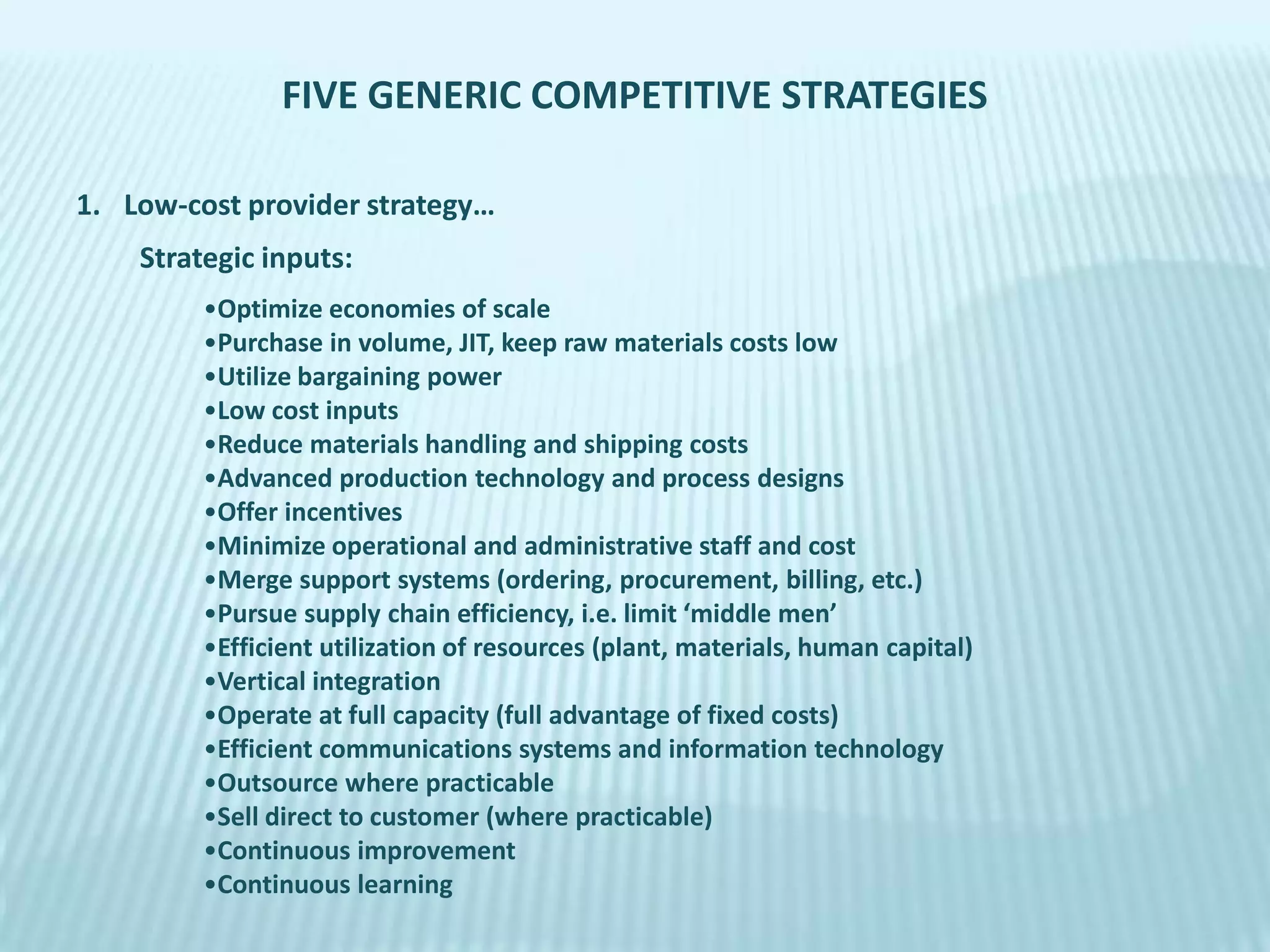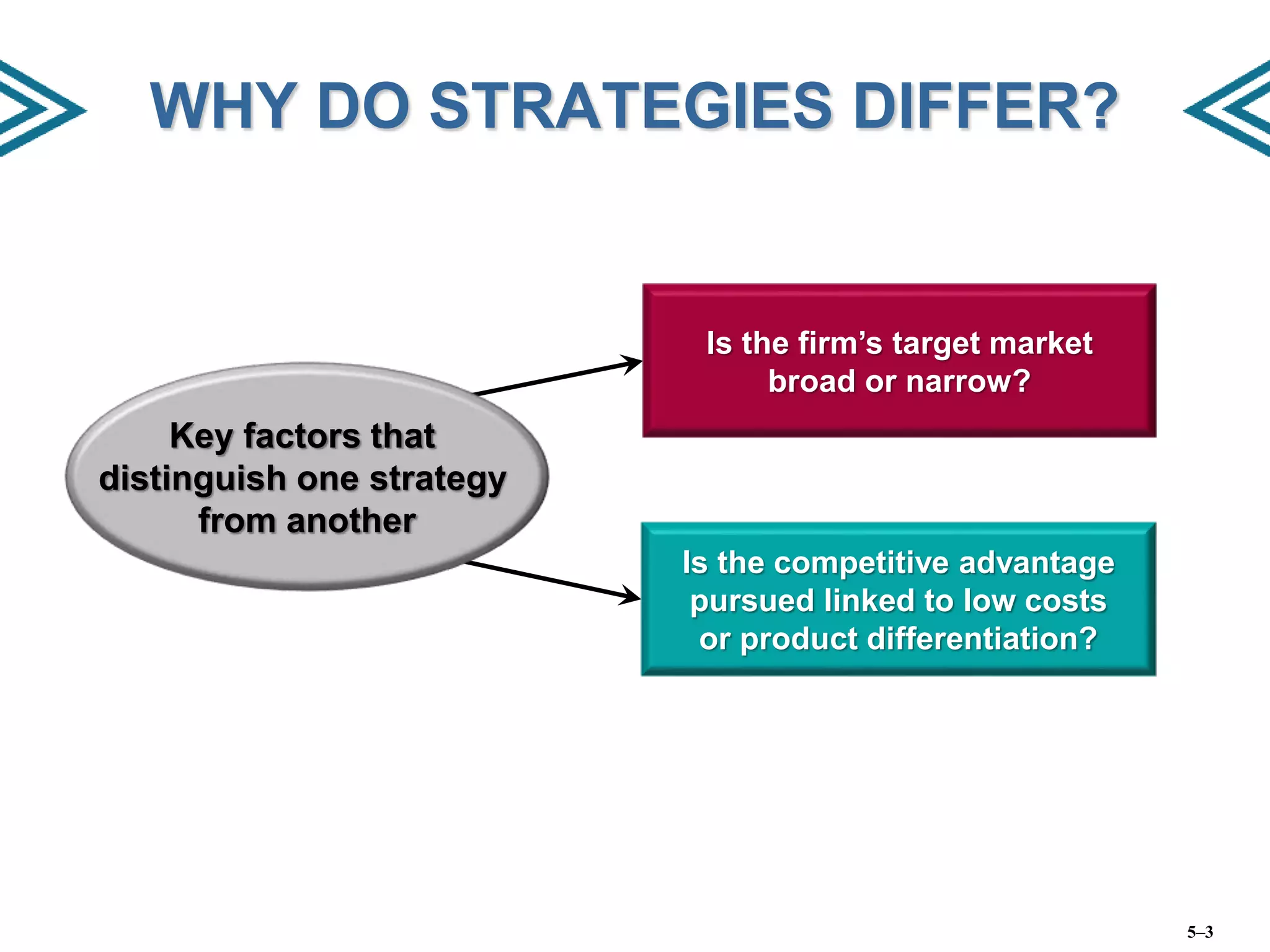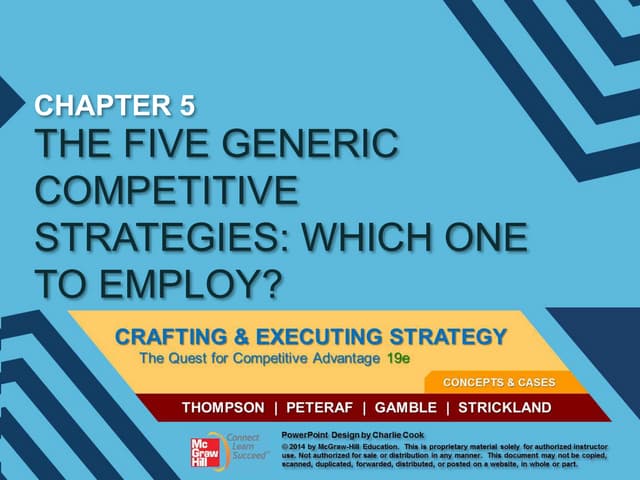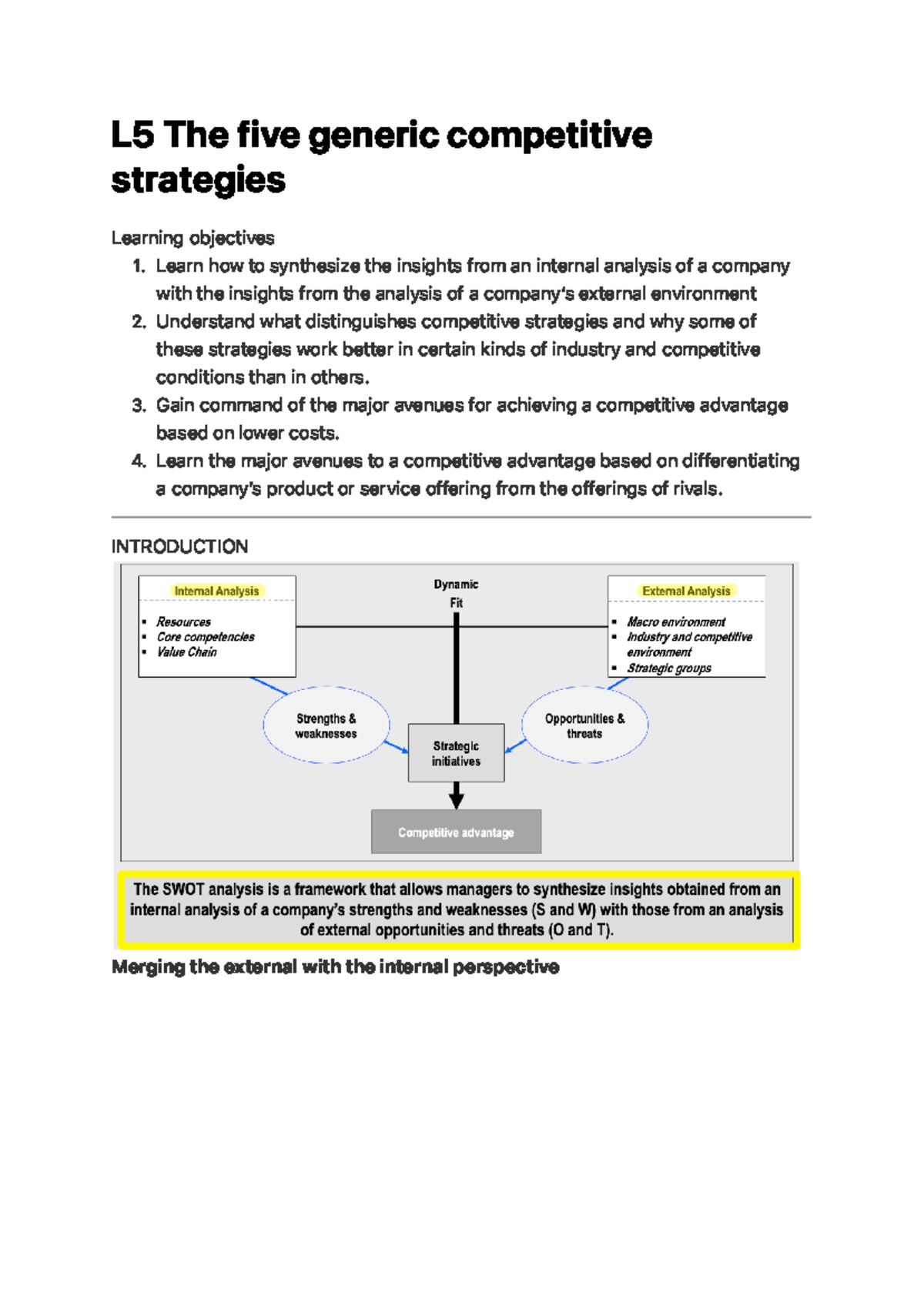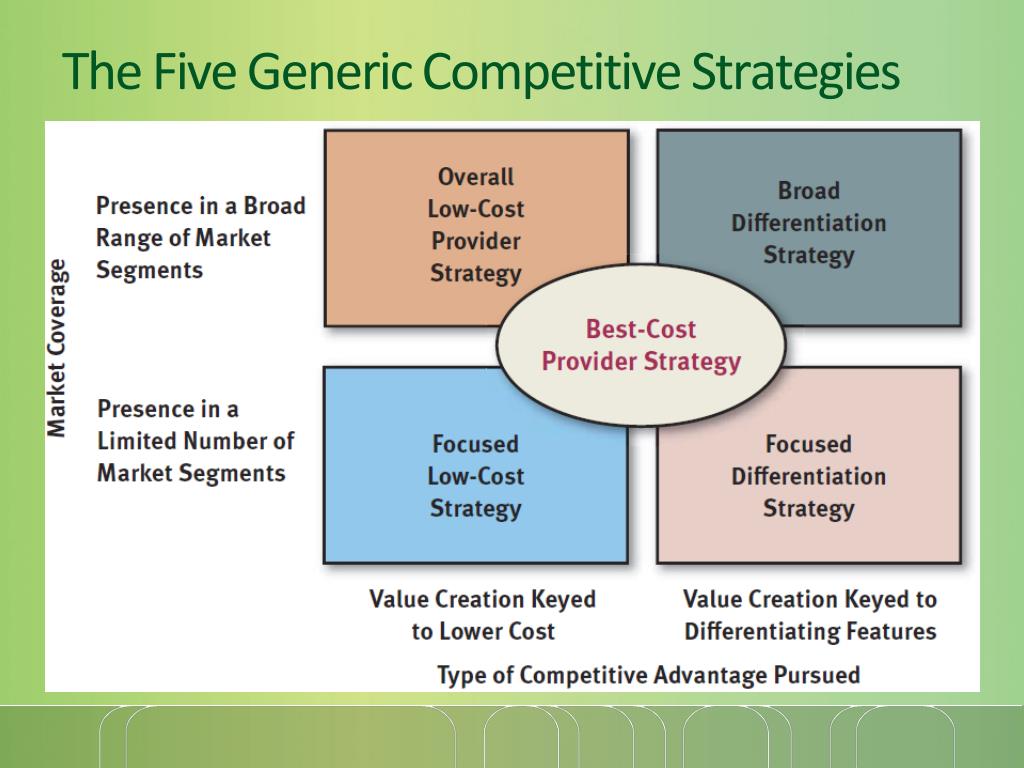The Five Generic Competitive Strategies Include
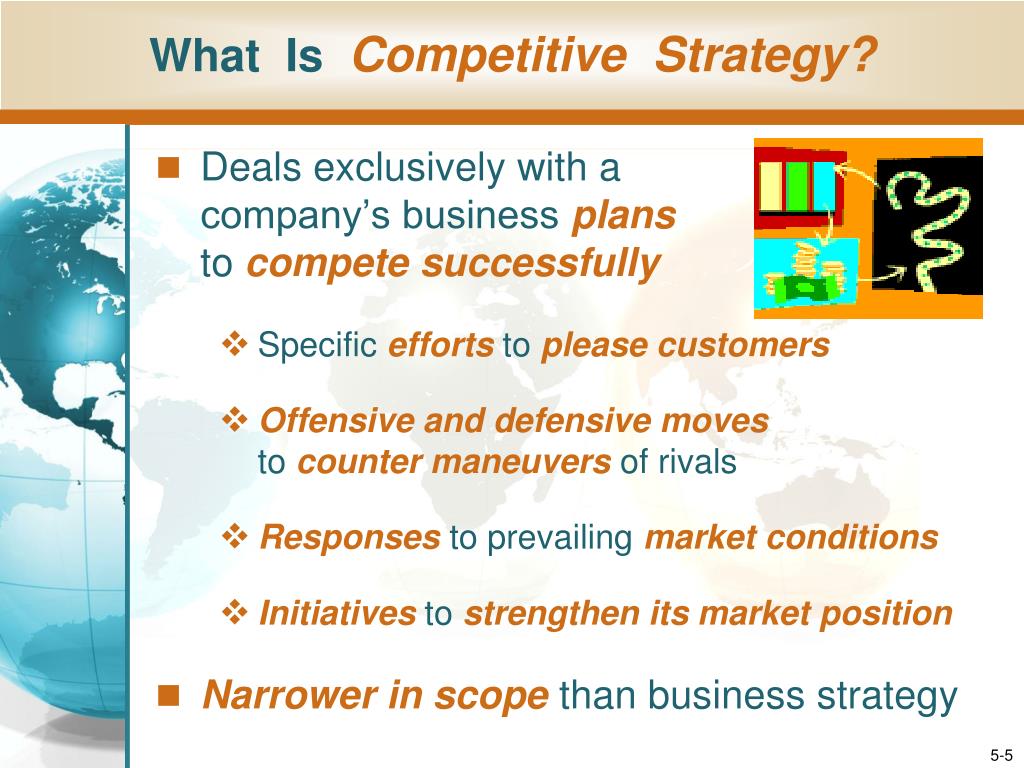
Imagine a bustling marketplace, a kaleidoscope of vendors vying for attention. Each stall, a business; each merchant, a strategist. Some shout the lowest prices, others boast unmatched quality, while a few offer niche products unavailable anywhere else. Just as each vendor seeks to carve out their corner of the market, every business, big or small, needs a game plan, a roadmap to navigate the competitive landscape. This is where the five generic competitive strategies come into play.
At the heart of business strategy lies the concept of competitive advantage. To achieve and sustain profitability, companies must choose how they will compete in the market. Michael Porter's framework of five generic competitive strategies provides a foundation for understanding and selecting a strategic path.
These strategies – cost leadership, differentiation, focused cost leadership, focused differentiation, and best-cost provider – offer distinct approaches to achieving a competitive edge. They guide businesses in making critical decisions about pricing, product development, marketing, and target market selection.
The Genesis of Strategic Thinking
The concept of competitive strategy wasn't born in a vacuum. Its roots lie in the broader field of strategic management, which seeks to answer the fundamental question: How can a business thrive and survive in the long run?
In the 1970s and 1980s, academics and consultants began to formalize the principles of strategic thinking. Michael Porter's work, particularly his book "Competitive Strategy: Techniques for Analyzing Industries and Competitors" published in 1980, proved groundbreaking.
Porter presented a systematic framework for understanding industry dynamics and formulating strategies to achieve a sustainable competitive advantage. He argued that companies must choose a clear strategic direction rather than being "stuck in the middle."
The Five Strategies Unveiled
Let's delve into each of the five generic competitive strategies, exploring their defining characteristics and the circumstances under which they are most effective.
Cost Leadership
The cost leadership strategy is all about becoming the lowest-cost producer in the industry. This isn't merely about cutting corners; it's about optimizing every aspect of the business to minimize expenses.
Companies pursuing this strategy focus on efficiency, scale economies, tight cost controls, and minimizing overhead. Think of Walmart, known for its relentless focus on cost reduction and its ability to offer consistently low prices.
Success with cost leadership requires a strong focus on operational excellence and continuous improvement. However, it can be vulnerable to new technologies or competitors with even lower costs.
Differentiation
The differentiation strategy involves creating products or services that are perceived as unique and valuable by customers. This can be achieved through superior quality, innovative features, exceptional customer service, or strong branding.
Apple, for example, differentiates itself through its sleek design, user-friendly interface, and strong brand image. Customers are often willing to pay a premium for these differentiating factors.
Differentiation requires creativity, strong marketing, and an understanding of customer needs. The key is to offer something that competitors cannot easily replicate.
Focused Cost Leadership
The focused cost leadership strategy is similar to cost leadership, but it targets a narrow market segment. Instead of trying to be the lowest-cost producer across the entire industry, the company focuses on achieving cost leadership within a specific niche.
For instance, a company might specialize in providing low-cost transportation services to college students. This allows them to tailor their operations and marketing efforts to a specific group of customers.
This strategy works well when the target market segment is underserved or has unique needs. It's crucial to understand the niche market deeply to succeed.
Focused Differentiation
The focused differentiation strategy is analogous to differentiation, but it also targets a narrow market segment. The company seeks to offer unique and valuable products or services to a specific group of customers.
Think of a luxury car manufacturer that only produces high-performance vehicles for racing enthusiasts. This strategy allows them to cater to the specific preferences and demands of a select group.
This approach requires a deep understanding of the target market and the ability to deliver highly specialized products or services. It's about providing exceptional value within a defined niche.
Best-Cost Provider
The best-cost provider strategy aims to offer customers the best value for their money. This involves combining elements of both cost leadership and differentiation, offering products or services with a relatively low price and appealing features.
Companies like Target often pursue this strategy, offering stylish and trendy products at affordable prices. The challenge is to balance cost control with the need for differentiation.
Success requires a strong understanding of customer value perceptions and the ability to manage costs effectively while maintaining quality and features.
The Significance of Strategic Choice
Choosing the right competitive strategy is crucial for long-term success. A well-defined strategy provides a framework for making consistent decisions, aligning resources, and creating a sustainable competitive advantage.
A company that tries to be everything to everyone – "stuck in the middle" – is likely to struggle. It will lack a clear identity and fail to achieve a strong position in the market.
The five generic competitive strategies are not mutually exclusive. Some companies may adopt hybrid strategies, combining elements of different approaches to create a unique competitive position. However, it's essential to have a clear primary strategy to guide decision-making.
Beyond the Framework: Adapting to Change
While Porter's framework has stood the test of time, the business world is constantly evolving. New technologies, changing customer preferences, and disruptive innovations require companies to be adaptable and agile.
The rise of digital platforms and the sharing economy have created new competitive landscapes, forcing companies to rethink their strategies. Sustainability and social responsibility are also becoming increasingly important factors in strategic decision-making.
The five generic competitive strategies remain a valuable starting point for strategic analysis. However, companies must also consider the broader context and be willing to adapt their strategies to meet the challenges of a dynamic world.
A Final Reflection
In the end, the five generic competitive strategies are more than just theoretical concepts. They are practical tools that can help businesses of all sizes navigate the complexities of the marketplace and achieve sustainable success.
By understanding the different approaches to competing and carefully considering their own strengths and weaknesses, companies can make informed strategic choices that will guide them on the path to growth and profitability.
As the marketplace continues to evolve, the principles of strategic thinking remain as relevant as ever. The ability to adapt, innovate, and create value will be the key to thriving in the competitive landscape of the future.
